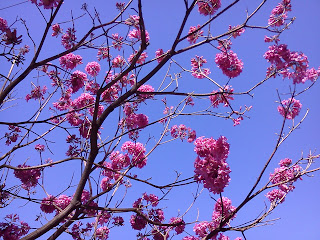June 24th
What a fantastic day in its quietness...
Partially clouded, it did not stop me from putting a jacket
and going for the ferry to cross to Niteroi!
Called a friend that had not been in touch for a long time....
...to make time adjustments once in a while is pretty nice :)
And what a tour! Always is!
The MAC (Museum of Contemporary Art) is one of the last works
of Brazilian Modernist Architect Oscar Niemeyer
who has presented us with a revolutionary Architecture in contemporaneity!
through his vast legacy of iconic buildings world wide
Marcos Chaves was exhibiting his own work called "SÓ VENDO A VISTA".
("Only seeing the view" or "I only sell the view"?)
Many double meanings in Portuguese.
("Only seeing the view" or "I only sell the view"?)
Many double meanings in Portuguese.
The first one is "VENDO", a verb form that happens when conjugating both "ver" and "vender", but with very different times and meanings.
"A VISTA" is the second case. It means "the view", but as an adverb, it means full payment.
made a little riddle
só vendo (only looking)
só vendo a vista... (only seeing the view)
só vendo a vista, ( I only sell the view)
só vendo a vista à vista ( I only sell the view full cash)
In the area outside the museum, and part of the program, was an electronic lounge...
Outdoors, overlooking the Guanabara bay!! Especially nice!
...with friends that have not seen each other in a long time!?....
Even more so!!!! Outstanding evening indeed!
Outdoors, overlooking the Guanabara bay!! Especially nice!
...with friends that have not seen each other in a long time!?....
Even more so!!!! Outstanding evening indeed!
It was Saint John's Day, we still had a typical country party to go to.
Could have not be more perfect.
This is Rio <3
This is Rio <3




.jpg)
.jpg)

.jpg)
.jpg)
.jpg)













